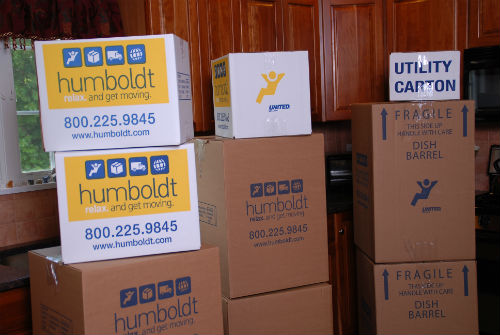Our experienced Boston movers and packers see self packing mistakes every day out on our jobs. In the industry, self packed boxes are often referred to as “PBO” or packed by owner. (If your moving company is packing for you, you may hear the term “CP” or carrier packed.) When you choose to pack yourself, you assume a major portion of the responsibility for your move’s success.
We asked the Humboldt Experts : What are the top 5 self packing mistakes?
Mistake #5 = Not packing an overnight / 1st day box.
- The last thing you want to do on the first night or first day in your new home is be searching for your necessities. Pack an overnight bag with all your medications and personal care items including make up, toiletries, pajamas, and a change of clothing. Pack an additional box or clear tote with toilet paper, shower gear including towels, cell phone chargers, paper plates, plastic cups & utensils, garbage bags, important papers, valuables, bed sheets & pillowcases, etc. Don’t forget to pack necessities for the kids and pets too! Moving is stressful. But if you prepare a well-packed overnight bag/box, the first night in your new home can be refreshing, worry-free, and leave you energized for unpacking the next day.
Mistake #4 = Incorrectly Labelled Boxes
- Whether you include too much information or not enough, correctly labeling your boxes can save you some serious headaches in the long run. Boxes should be clearly labelled on two sides with the room, contents, and your name. Use a large marker and write legibly. Mark any fragile items or items that should not be stacked. Taking a little bit of extra time to label clearly will allow for your boxes to be easily inventoried, placed in the correct room at your destination, and will make locating items / unpacking a breeze.
Mistake #3 = Not Planning Enough Time to Pack
- Packing often can take double the amount of time anticipated. When the truck arrives, everything is required to have been properly packed the night before and ready for loading. If packing yourself, allow at least several weeks to complete the job properly. Start gathering packing supplies at least a month to two months in advance. Create a packing timeline / schedule and stick to it! Pack a few boxes a day or set aside entire days for packing – whatever works for your schedule. Start with seasonal, decor, and infrequently used items. About 2 weeks before your move, start packing your every day items. Finish up your packing a few days before the move. Make sure to pack your 1st day box! Label and stack boxes to the side of the room you packed them in to keep them organized and easy to access.
Mistake #2 = Overloading Boxes
- More is not always better! We often see boxes stuffed to the brim and overloaded. While you want your box to be full to prevent crushing, you do not want to overload on items or weight. Overloaded boxes run the risk of the bottom falling out, sides bursting open, items crushing other items within the box, and generally are more difficult to carry and stack. Leave enough room around your items and pad open spaces with packing paper to create a firm, strong, stack-able box.
Mistake #1 = Incorrect Packing Materials
- While used and recycled boxes can save you some $, they may not always be the most sound choice. Used boxes may be worn and therefore less strong to protect your belongings. Recycled boxes (typically from supermarkets, liquor stores, etc.) are built to protect their original items only. Consider the weight rating on these boxes. Also, boxes previously used to store food products may have crumbs and food remaining which could damage your items or attract pests. For heavier items, consider double walled boxes like a “dish pack box” to provide the extra strength required. Framed photos and mirrors should be packed in “mirror boxes”. As a general rule of thumb, heavier items should be packed in smaller boxes and lighter items should be packed in larger boxes. Use quality packing tape to seal your boxes. Always use the “tape to tape” method when packing boxes as tape can easily peel off cardboard especially if you are storing the boxes for any length of time. Use unmarked packing paper to pad boxes. Newsprint / newspapers can rub off and damage your items. As a rule of thumb, using the correct professional grade materials will provide the most protection when packing your items. Check out this additional article on the many types of moving boxes : Proper Packing Can Prevent Property Damage
We highly recommend the use of professional packing supplies, which are available for purchase and can be delivered to your residence by clicking here to fill out an online order form.
For more detailed information on how to pack specific items click here.
Are you ready for your next relaxing moving experience? If you’re moving soon, give our team a call today and let’s get started!
















